Takahiro Sanda | Markins Ball Head
Theme
World Heritage Sites and Nature
Photographer
Takahiro Sanda
Date
June-August 2020
Location
Nara Prefecture
Device
Markins
FUJIFILM
X-T4
X-T3
XF10-24mmF4 R OIS
XF16-80mmF4 R OIS WR
XF100-400mmF4.5-5.6 R LM OIS WR
XF18-55mmF2.8-4 R LM OIS
XC50-230mmF4.5-6.7 OIS II
X-T3
XF10-24mmF4 R OIS
XF16-80mmF4 R OIS WR
XF100-400mmF4.5-5.6 R LM OIS WR
XF18-55mmF2.8-4 R LM OIS
XC50-230mmF4.5-6.7 OIS II
GITZO
GT1550T Traveler
PeakDesign
TT-CB-5-150-AL-1 Travel Tripod Aluminum
Review
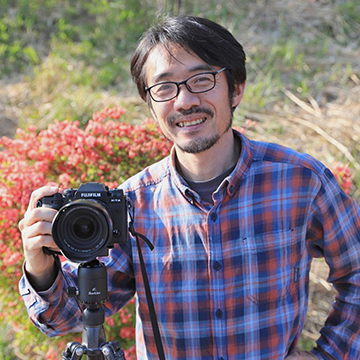
Takahiro Sanda
URL : photosanda.com
Instagram : @taka_sanda
YouTube Channel : TAKAHIRO SANDA
Born in Nara Prefecture in 1975. Photographing world heritage sites is a life's work, with over 350 world heritage sites captured in more than 100 countries and regions, providing work for various magazines and calendars. Regularly held over 100 photo exhibitions around the country. In recent years, also focused on photographing Myanmar. Main publications include "Thirty-six Scenes of the World" (2016) and "Ikoma Fire Festival" (2014).
Member of the Japan Professional Photographers Society (JPS)
FUJIFILM X-Photographers
Academy X Instructor
FUJIFILM X-Photographers
Academy X Instructor
- Photo exhibition (solo exhibition) -
2008
"Heritage of Europe, Asia and Japan"
Taikichi Irie Nara City Museum of Photography
2009
"World Heritage Photo Exhibition - Egypt and Europe" Kamakura Performing Arts Center
2010
"Africa, the land of life" Osaka Prefectural Chikatsu Asuka Museum
2011
"Experience World Heritage Sites through a Journey of the Heart" Yokohama Sotetsu Gallery
2012
"Trajectory: From Asia to Africa" Sapporo Yamanote Gallery
2013
"Latin American Heritage" Ehime Prefectural Lifelong Learning Center
2014
"Lakes of the World and Japan"Shiga Prefectural Lake Biwa Museum
2015
"Akatsuki: The Dawn of the World"
Kyoto Prefectural Keihanna Memorial Park Gallery Moon Garden
2016
"Thirty-six Views of the World" Fujifilm Photo Salon Tokyo/Osaka
2016
"MYANMAR TIME" Olympus Gallery Tokyo and Osaka
2017
"Four Seasons of Nara" Running Horse Lantern,Hong Kong
2018
"Photographing World Heritage Sites with Tokina Lenses"
Kenko Tokina Service Center
2018
“Earth Color FURANO × WORLD”
Hokkaido Furano Hotel
2019
"Heisei World Heritage" アルカスSASEBO
2020
"Silk Road Heritage~Silk Road and the World Heritage~"
Fujifilm Imaging Plaza Tokyo
Fujifilm Imaging Plaza Tokyo
URL : photosanda.com
Instagram : @taka_sanda
YouTube Channel : TAKAHIRO SANDA
Travel and tripod
I shoot a lot overseas, so I'm always thinking about how to reduce the weight of my luggage. In recent years, cameras and lenses have become much lighter and more compact as I've switched to mirrorless cameras, but it's been difficult to make tripods lighter because it's said that heavier tripods are more stable.
However, the weight and size restrictions for carry-on luggage on LCCs (low-cost carriers), which I've been using more frequently in recent years, have been getting stricter, so I've started using small, lightweight travel tripods.
I've tried tripods from various manufacturers, but the thing that gets sacrificed in order to make them smaller is the tripod head. A large tripod head is best for taking photos with a well-defined composition, but most of the tripods for travel come with small ball heads, which makes me worried about fine adjustments and stability when shooting vertically.
However, the weight and size restrictions for carry-on luggage on LCCs (low-cost carriers), which I've been using more frequently in recent years, have been getting stricter, so I've started using small, lightweight travel tripods.
I've tried tripods from various manufacturers, but the thing that gets sacrificed in order to make them smaller is the tripod head. A large tripod head is best for taking photos with a well-defined composition, but most of the tripods for travel come with small ball heads, which makes me worried about fine adjustments and stability when shooting vertically.
My Encounter with Markins
I saw the Markins ball head at the CP+ venue, which I had heard from a photographer I know that it was easy to use, but I felt that it was a little too big to take on a trip.
I'm ashamed to say that I only found out about the Traveler model this year, and decided to get the Q3iTR-BK.
The Traveler model is a smaller model with a narrower knob protrusion, and when I attached the Q3iTR-BK to the Gitzo series 1, 5 sections travel tripod that I mainly use when traveling, I found that it was a little wider when I inverted the legs to store it, but I thought that it was within the acceptable range.
Also, when I attached it to the Peak Design travel tripod that I recently introduced, it transformed into a tripod with a very stylish design, so I think this combination will be useful on future trips. The popular red color was nice, but I chose black to match the color of the tripod.
I'm ashamed to say that I only found out about the Traveler model this year, and decided to get the Q3iTR-BK.
The Traveler model is a smaller model with a narrower knob protrusion, and when I attached the Q3iTR-BK to the Gitzo series 1, 5 sections travel tripod that I mainly use when traveling, I found that it was a little wider when I inverted the legs to store it, but I thought that it was within the acceptable range.
Also, when I attached it to the Peak Design travel tripod that I recently introduced, it transformed into a tripod with a very stylish design, so I think this combination will be useful on future trips. The popular red color was nice, but I chose black to match the color of the tripod.


Try it out
Even the smallest Markins head, the Q3i series, has a considerable load capacity of 30 kg. It is often the case that the numbers listed in the catalog differ from the actual usage conditions, but Markins' load capacity standard is measured by the weight that can be supported at a position 5 cm away from the center bolt, which is a point that reflects the actual situation more.
Of course, I won't be putting a 30 kg camera on it, but I can of course use it without difficulty even with a 100mm to 400mm telephoto zoom lens attached to the camera.
As expected, there is a big difference in the sense of security when there is a margin rather than the limit of the load capacity. With the head I used until now, I had to turn the knob until it became stiff with a lot of force, but I was surprised that Markins can be firmly fixed with a little force. This feeling was not available with the heads I had used before. It may seem like a trivial thing, but it freed me from the stress of whether it was fixed or not.
Of course, I won't be putting a 30 kg camera on it, but I can of course use it without difficulty even with a 100mm to 400mm telephoto zoom lens attached to the camera.
As expected, there is a big difference in the sense of security when there is a margin rather than the limit of the load capacity. With the head I used until now, I had to turn the knob until it became stiff with a lot of force, but I was surprised that Markins can be firmly fixed with a little force. This feeling was not available with the heads I had used before. It may seem like a trivial thing, but it freed me from the stress of whether it was fixed or not.

For the plates, I use the general-purpose L-plate PV-80+LV-170 for the X-T3 and the PL-55 for the telephoto lens tripod mount.
The L-plate is very useful because it can be switched to vertical position instantly. The X-T4 I introduced this year has a vari-angle LCD screen, and the LCD screen appears on the left side of the camera body, so I remove the sub-plate and use it.
When shooting vertically, I inevitably tilt the ball head 90 degrees, but it is helpful that it can be firmly fixed.
The L-plate is very useful because it can be switched to vertical position instantly. The X-T4 I introduced this year has a vari-angle LCD screen, and the LCD screen appears on the left side of the camera body, so I remove the sub-plate and use it.
When shooting vertically, I inevitably tilt the ball head 90 degrees, but it is helpful that it can be firmly fixed.
About the sample photos
I originally wanted to take it overseas, but soon after I got it, the impact of COVID-19 made it difficult to go overseas, let alone outside of the prefecture, to take pictures.
Fortunately, Nara Prefecture, where I live, has three World Heritage Sites (it is actually the prefecture with the most World Heritage Sites in Japan), so I went there many times from June to July, mainly in the early morning and evening.
I usually travel as far away as possible in search of subjects I have never seen before, but this time I think it was a good opportunity to take a fresh look at my hometown.
I hope to be able to report on my use of it overseas one day.
Fortunately, Nara Prefecture, where I live, has three World Heritage Sites (it is actually the prefecture with the most World Heritage Sites in Japan), so I went there many times from June to July, mainly in the early morning and evening.
I usually travel as far away as possible in search of subjects I have never seen before, but this time I think it was a good opportunity to take a fresh look at my hometown.
I hope to be able to report on my use of it overseas one day.

■ Kinpusenji Temple as seen from Kamisenbon on Mount Yoshino
(At the World Heritage Site "Sacred Sites and Pilgrimage Routes in the Kii Mountain Range")
X-T4 / XF100-400mmF4.5-5.6 R LM OIS WR
1/38 s F11 ISO160
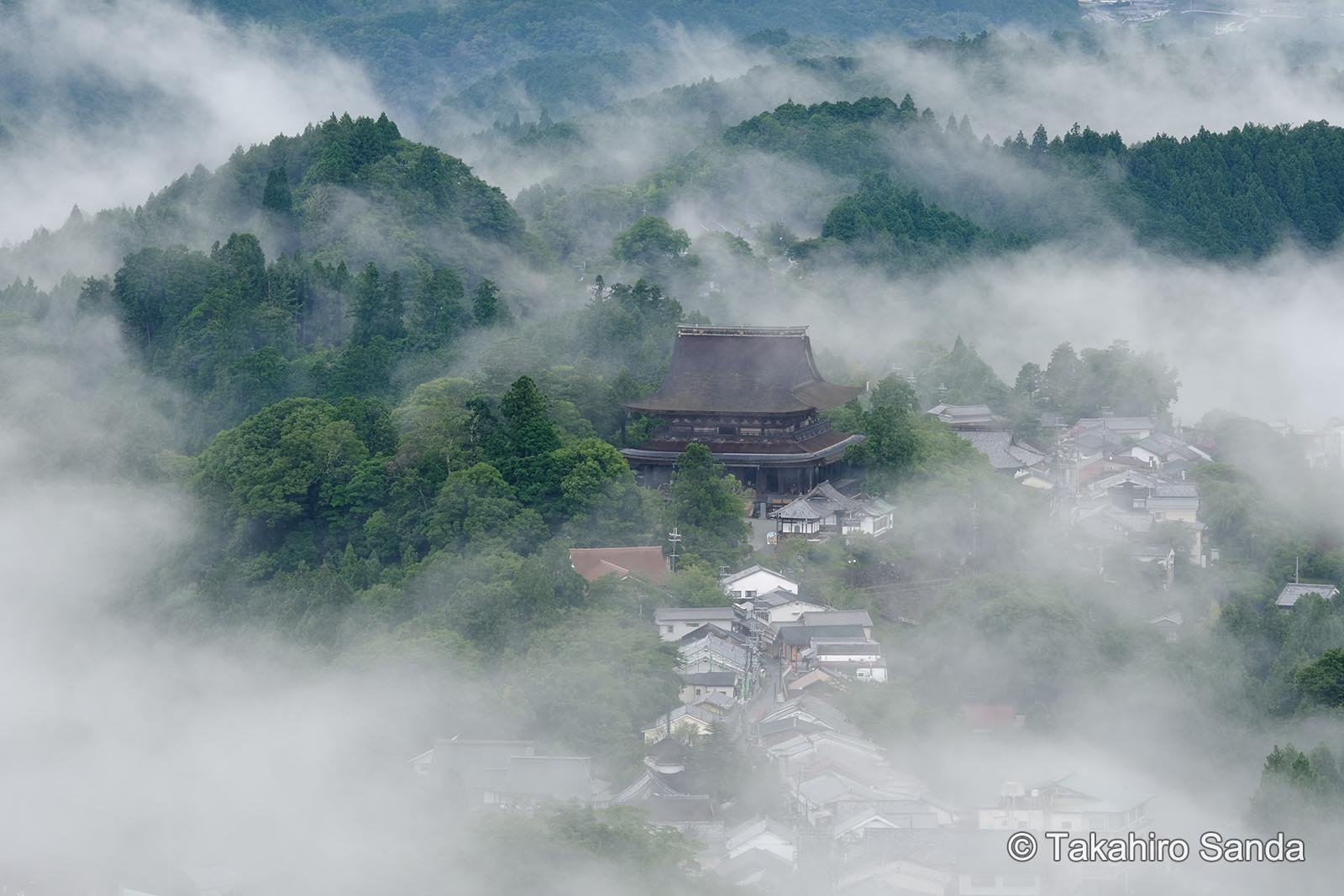
This year, the rainy season was long and it rained every day. I aimed to capture the misty scenery early in the morning after the rain from Kamisenbon, Mt. Yoshino, which is famous for its cherry blossoms. I used a 100-400mm telephoto lens in an unstable location, but the shot remained stable.
■ Hokkiji Temple evening view
(At the World Heritage site "Buddhist Monuments in the Horyu-ji Area")
X-T4 / XF10-24mmF4 R OIS
1/10 s F10 ISO160
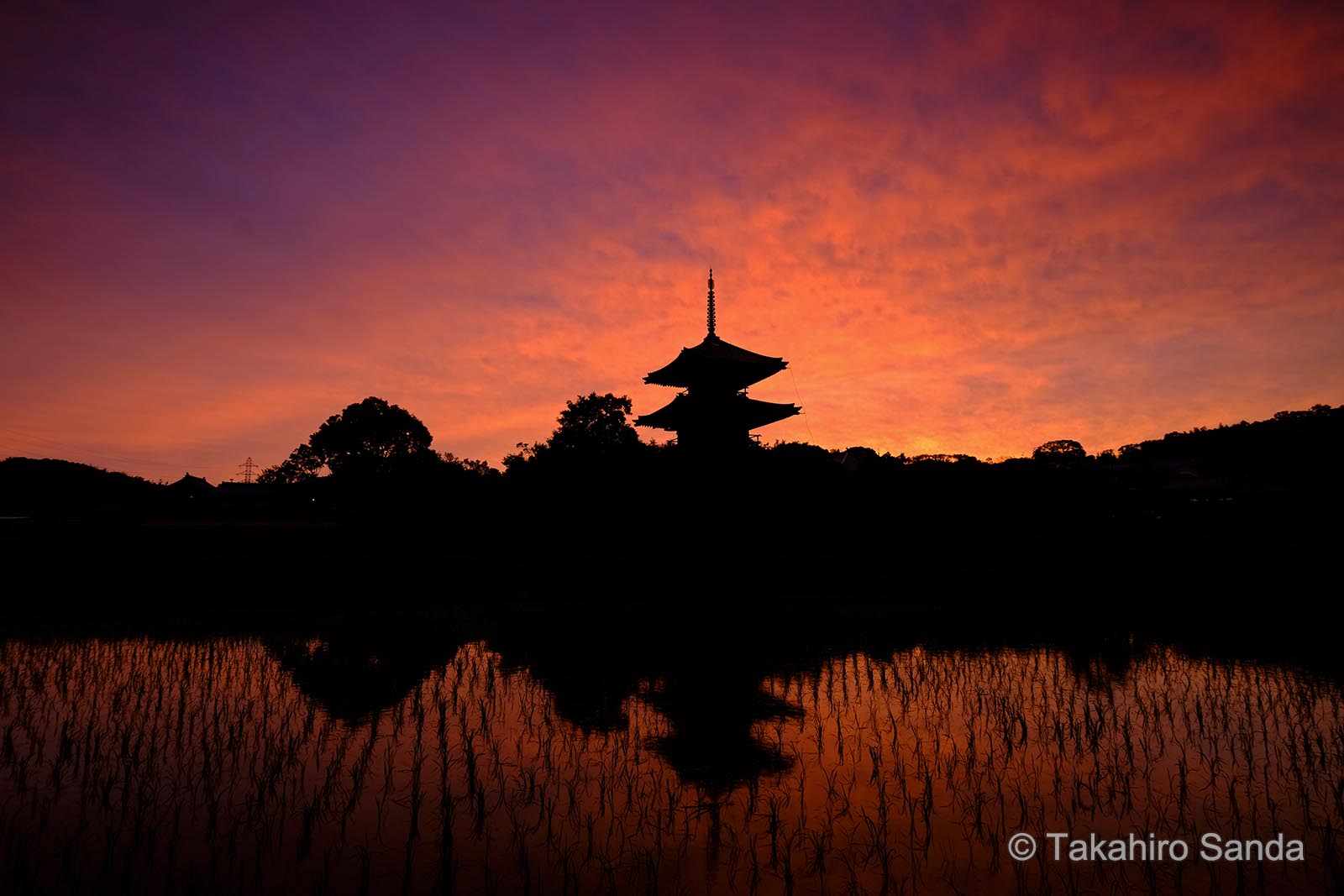
I aimed to capture the reflection of the rice planting just after it was finished in the field in front of the three-story pagoda. The sky was cloudy and I couldn't see the sunset. Just as I was about to give up and head home, the sky suddenly turned red, so I hurried back to the shooting spot. The entire equipment was compact, so I was able to respond immediately.
■ Todaiji Temple Great Buddha Hall Illumination
(At the World Heritage Site "Historic Assets of Ancient Nara")
X-T4 / XF10-24mmF4 R OIS
120 s F11 ISO160 ND Filter
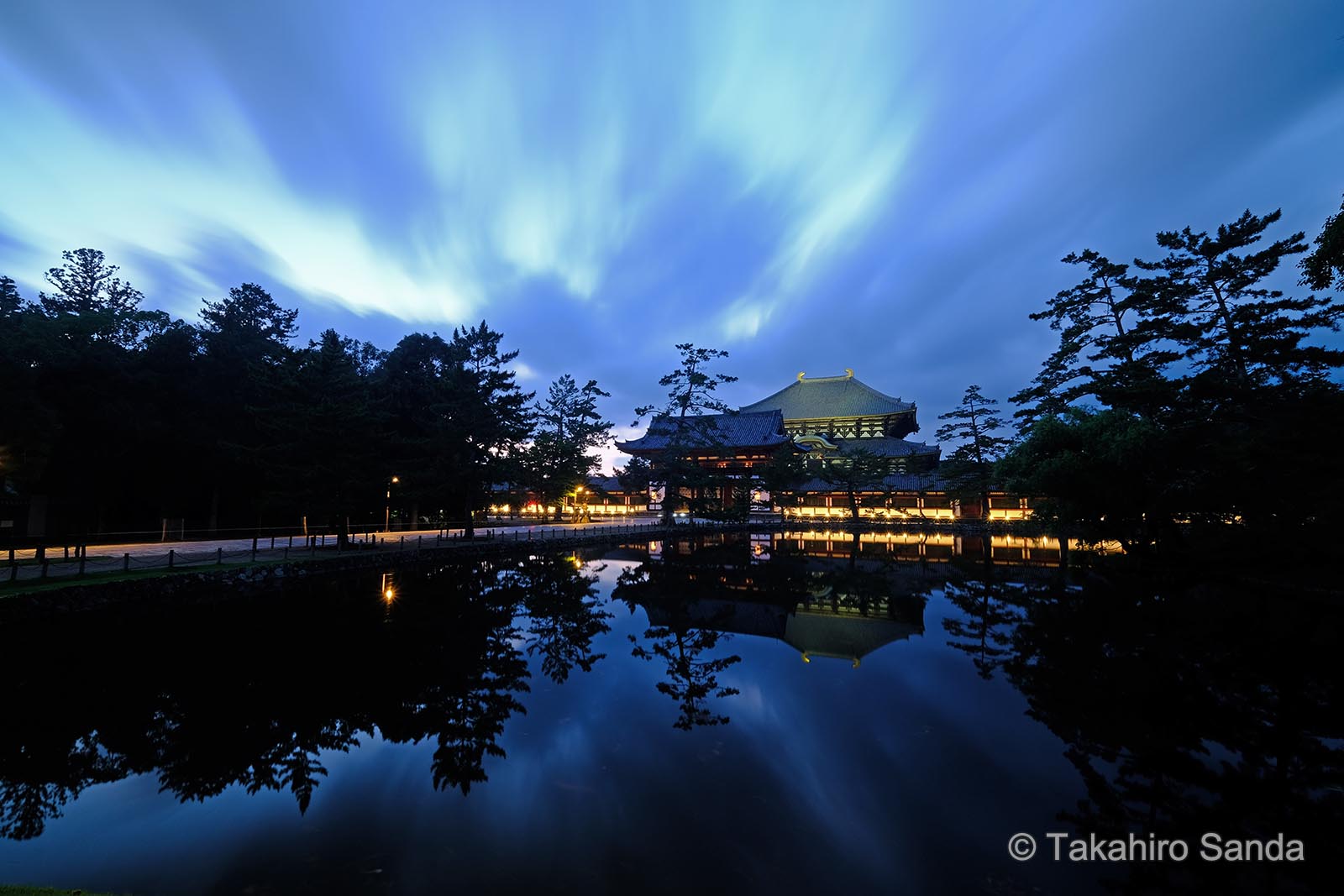
This is a light-up event that takes place every summer. I shot this with a long exposure of 120 seconds, so I would normally use a large tripod and head, but the combination of a Gitzo tripod and Q3iTR-BK worked perfectly fine.
■ Yakushiji Temple seen from the large pond
(At the World Heritage Site "Historic Assets of Ancient Nara")
X-T4 / XF16-80mmF4 R OIS WR
1/8 s F11 ISO160
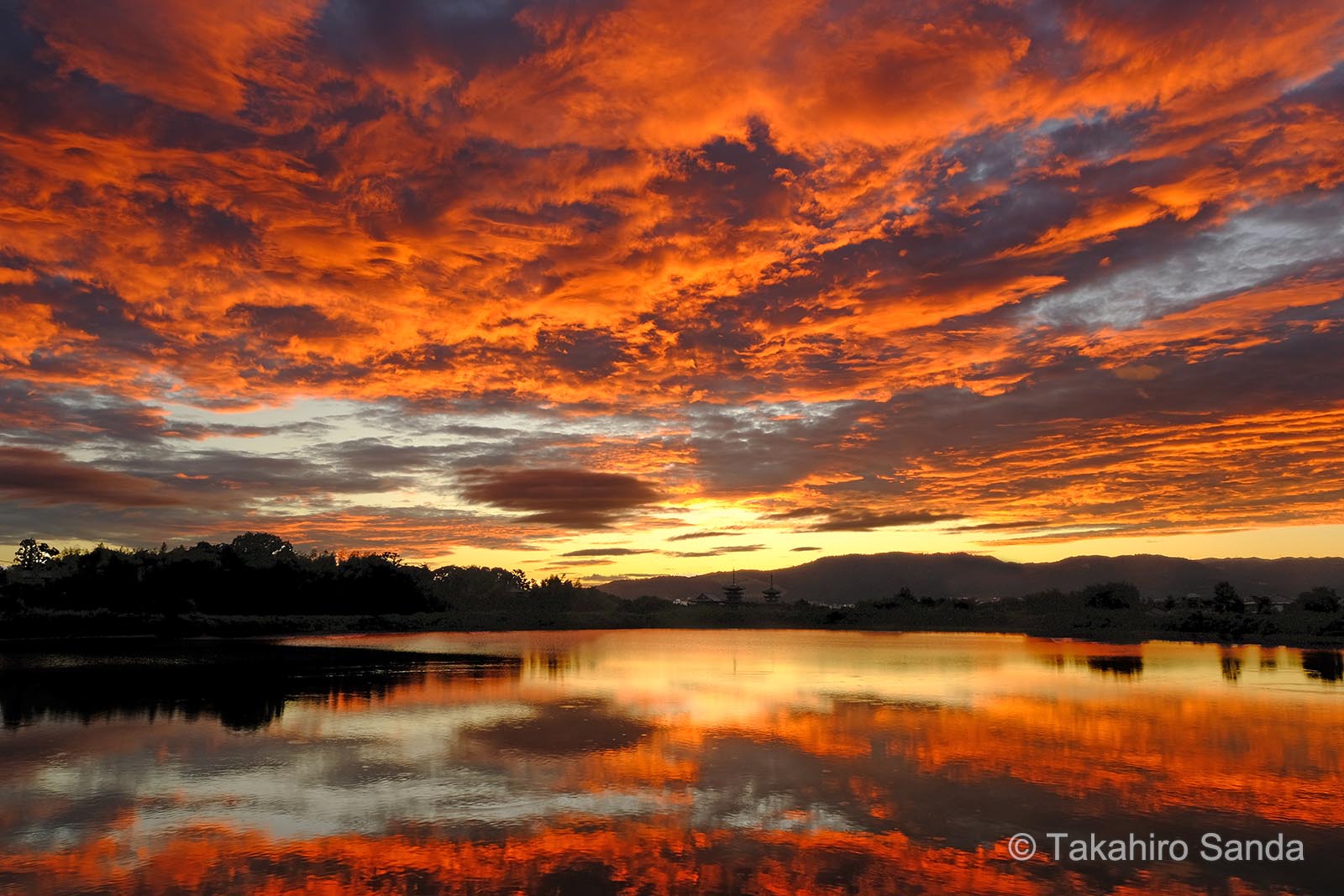
This was the place I went to most often to take photos during this period. After the rainy season ended, I went there almost every day when I had nothing else to do, and just the day before I wrote this report, I was blessed with a beautiful sunrise. It's a famous photography location and there are many photographers, but recently I've often seen people using Markins tripod heads.






